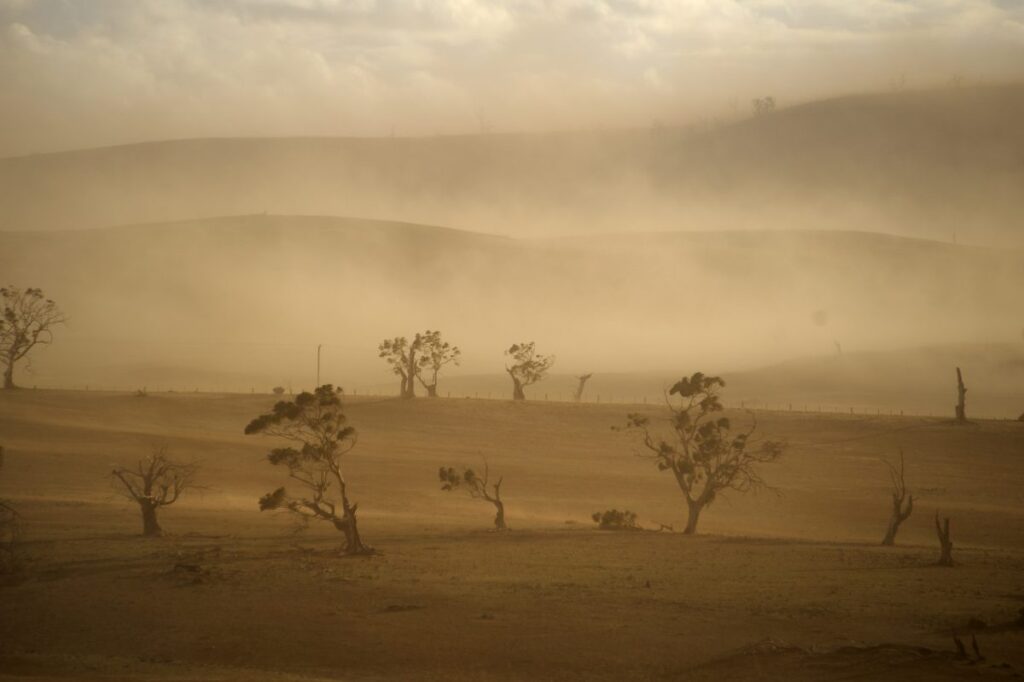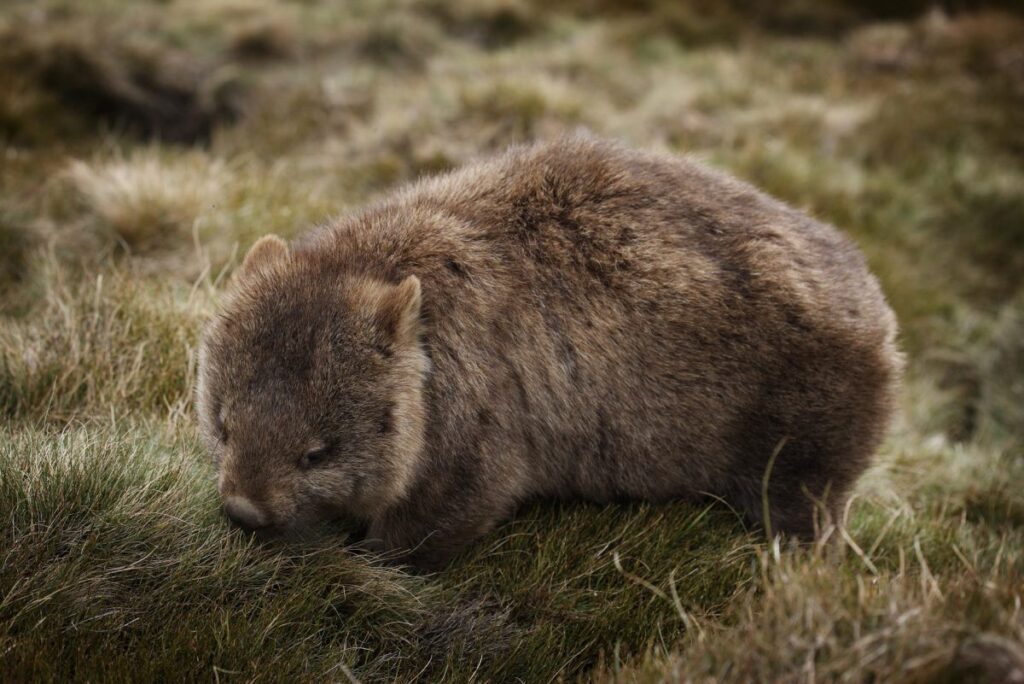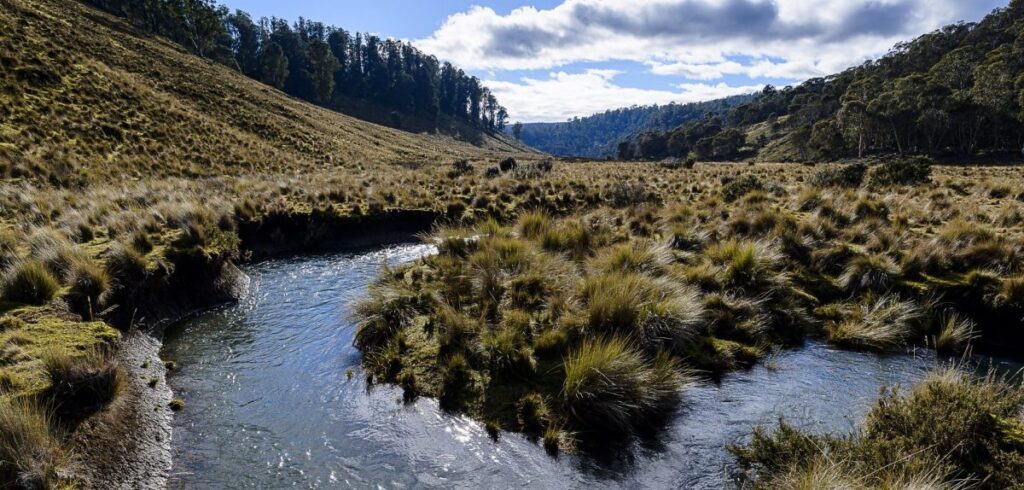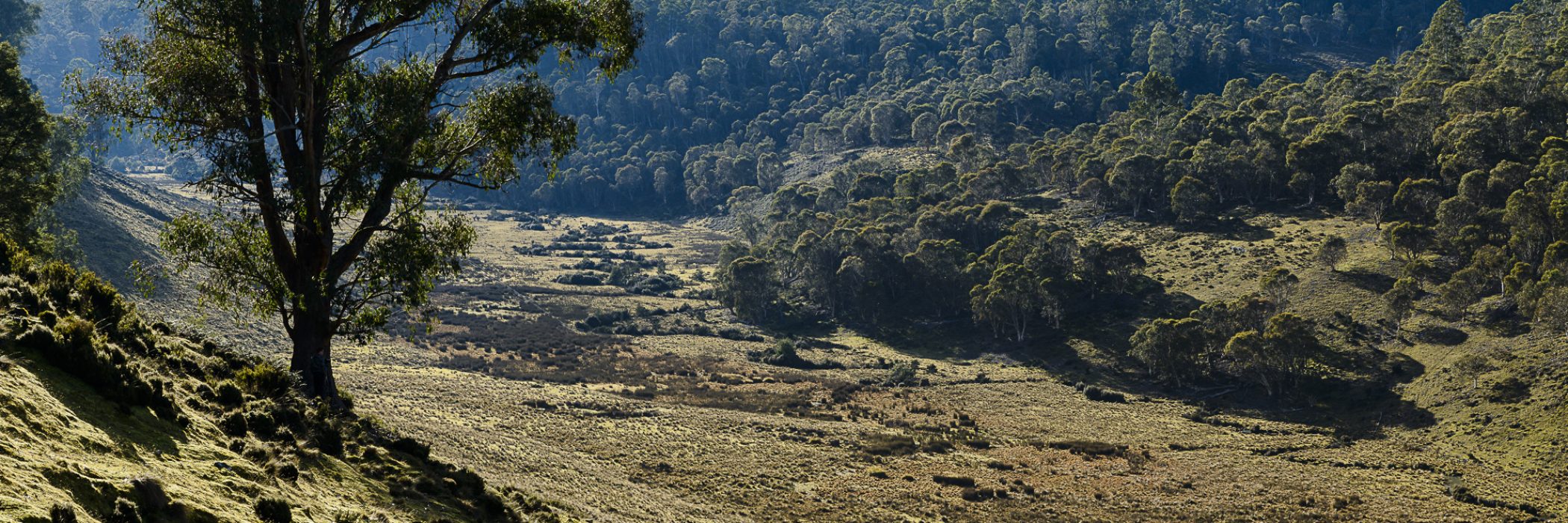The landscape value of protected areas on private land
Since European settlement, land clearing, grazing, urban development, changed fire regimes, agriculture and irrigation have all impacted Tasmania’s ecosystems. Human activity has reduced and fragmented the habitats of our native plants and animals. Protected areas are the best available means to ensure the recovery and survival of our threatened native species – they also conserve the healthy ecosystems that are essential to support human life. Hence, healthy functioning and resilient environments are our best defense against a changing climate.
In Tasmania, privately protected land covers a small area, but contains a higher percentage of threatened communities than public reserves.
Protected areas build resilience by controlling other habitat threats such as weeds and feral animals, and by managing water resources and regenerating vegetation. They also form a buffer against the impacts of climate change, providing refuge for species to survive and adapt, and reducing the extinction risk for our native species. Accordingly, protected areas on private land help build more resilient landscapes by providing wildlife refuge and corridors for plants and animals to move safely around the landscape as they try to adapt to climate change impacts to their habitat. By creating these havens across the landscape, protected areas provide the best possible conditions for Tasmania’s native plants and animals to adapt to climate change.
Maintaining the viability and integrity of ecosystems, species and populations is a key conservation objective. However, there is no single threshold that guarantees the persistence of all ecosystems and species. Instead, the most common approach is to aim to protect and manage extensive areas of habitat, on the basis that larger areas are more likely to maintain intact ecological processes, and support more species and larger populations. In addition to size, protected areas that provide greater landscape connectivity will be more effective at maintaining healthy ecosystems, as connectivity allows for movements of species and assemblages at different spatial and temporal scales.

Connectivity has always been important for dispersal, migration and maintaining healthy ecosystems. But now we need to look at movements of species and habitat in terms of range shifts as a response to climate change. For example, we are already seeing shifts towards higher elevation as temperatures increase. Taking a landscape scale approach for our protected areas allows a more holistic consideration of these broader ecosystem requirements.
A landscape scale approach recognises that many natural processes that are important for conservation operate at large spatial scales, requiring the involvement of all land managers, both public and private. This strategic landscape approach complements and better integrates conservation efforts that occur at particular sites. A landscape scale approach also integrates conservation management across land tenure and land uses, requiring coordination between different land managers.
Landscapes operate at a range of scales from site, to property, to catchment, to region and so on, depending on the natural value under consideration. A landscape approach recognises the interdependence of nature across all scales. This approach not only considers the environment, but also includes social, economic and cultural factors. A landscape approach can strategically and effectively integrate biodiversity conservation efforts, while considering issues relating to cultural heritage, local economies, infrastructure, agriculture, ecotourism, and the health and social benefits for both the environment and regional communities.

With over 100,000 hectares of private land in Tasmania managed for conservation via conservation covenants and more than 2,000 properties involved, including Land for Wildlife and Gardens for Wildlife, protected areas on private land provide and vital role in conservation at a landscape scale. In Tasmania, privately protected land covers a small area, but contains a higher percentage of threatened communities than public reserves. Private protected areas are also more likely to be found in parts of the state that are fragmented with reduced native vegetation due to clearing and conversion to agriculture. Hence, protected areas on private land, especially those in a fragmented landscape, help maintain the connectivity necessary for species persistence.
The concept of connectivity in a landscape is not restricted to areas of continuous native vegetation, but also relates to the distances between patches, patch size corridors or scattered trees in a landscape, which, depending on the species involved, can be essential to maintain viable populations. The challenge is that different species have different movement patterns and habitat tolerances. Different species have different scales of movement and capacities to move through disturbed landscapes. The starting point for conservation is to protect and maintain what is already there. The more habitat there is, the more likely it is to be connected.

In addition to the contribution to biodiversity conservation that protected areas make at a landscape scale, their social and economic importance cannot be overstated. We are seeing an unprecedented rise in tourism in Tasmania. The tourism sector relies on Tasmania’s natural heritage as the number one draw-card, and key to this is the experience of visitors passing through landscapes with prominent protected areas, including those on private land.
Our primary industries are also dependent on the ecosystem services that our protected areas help to provide. As well as providing employment for Tasmanians, our natural heritage contributes to the Tasmanian way of life, supporting popular recreational activities, such as camping, boating diving, fishing, hunting and bushwalking, as well as proving the backdrop to everyday life.
Finally, what everyone does matters! Although owners of private protected areas may sometimes feel like they are on their own, the land they are looking after is almost certainly a vital piece in a bigger picture. Connected landscapes are made up of many individual patches on properties, creeks, roadsides, shelter belts, even individual trees. Take one part away and the whole landscape is affected. On the other hand, our conservation activities have both local area benefits as well as larger benefits across the wider landscape.




